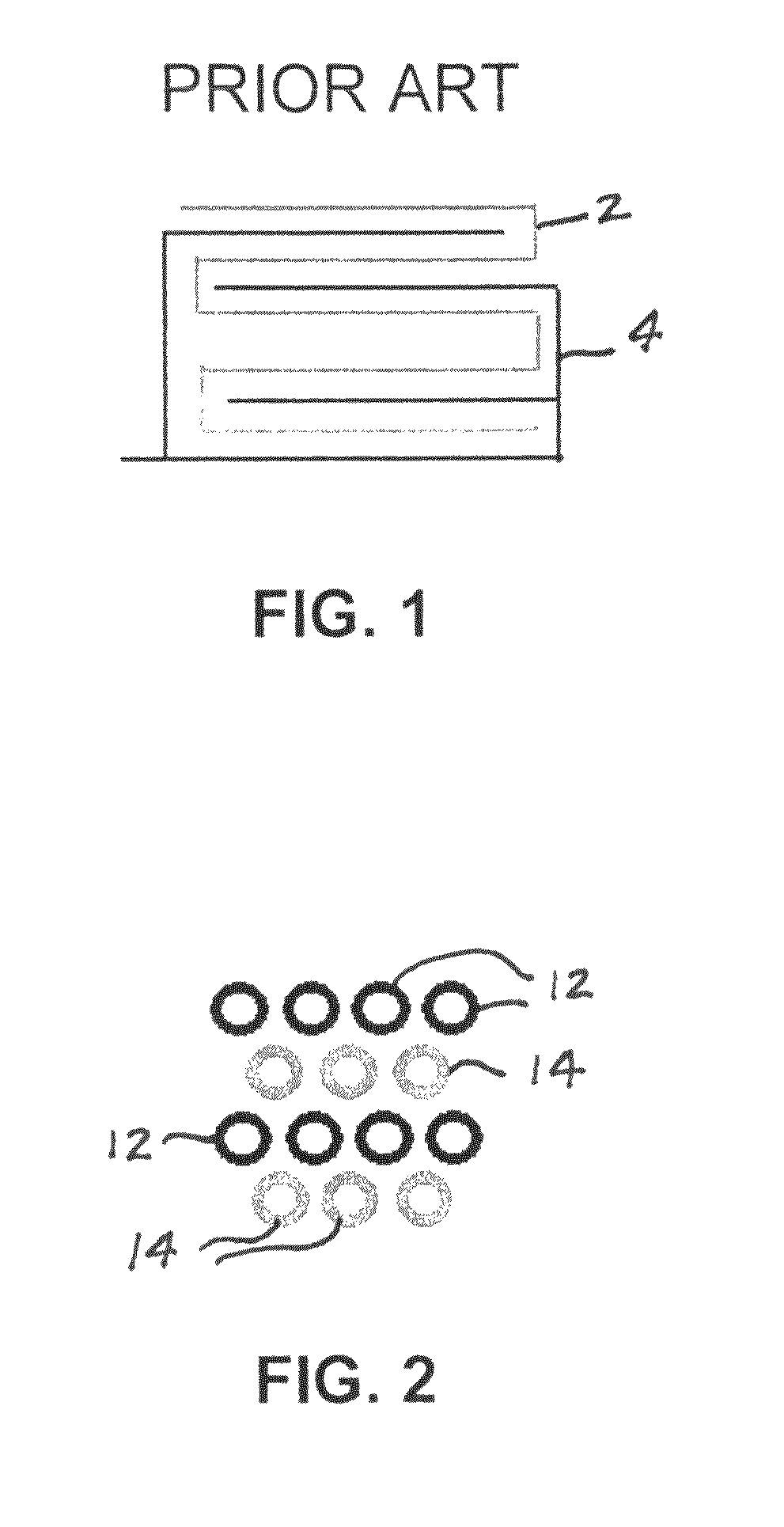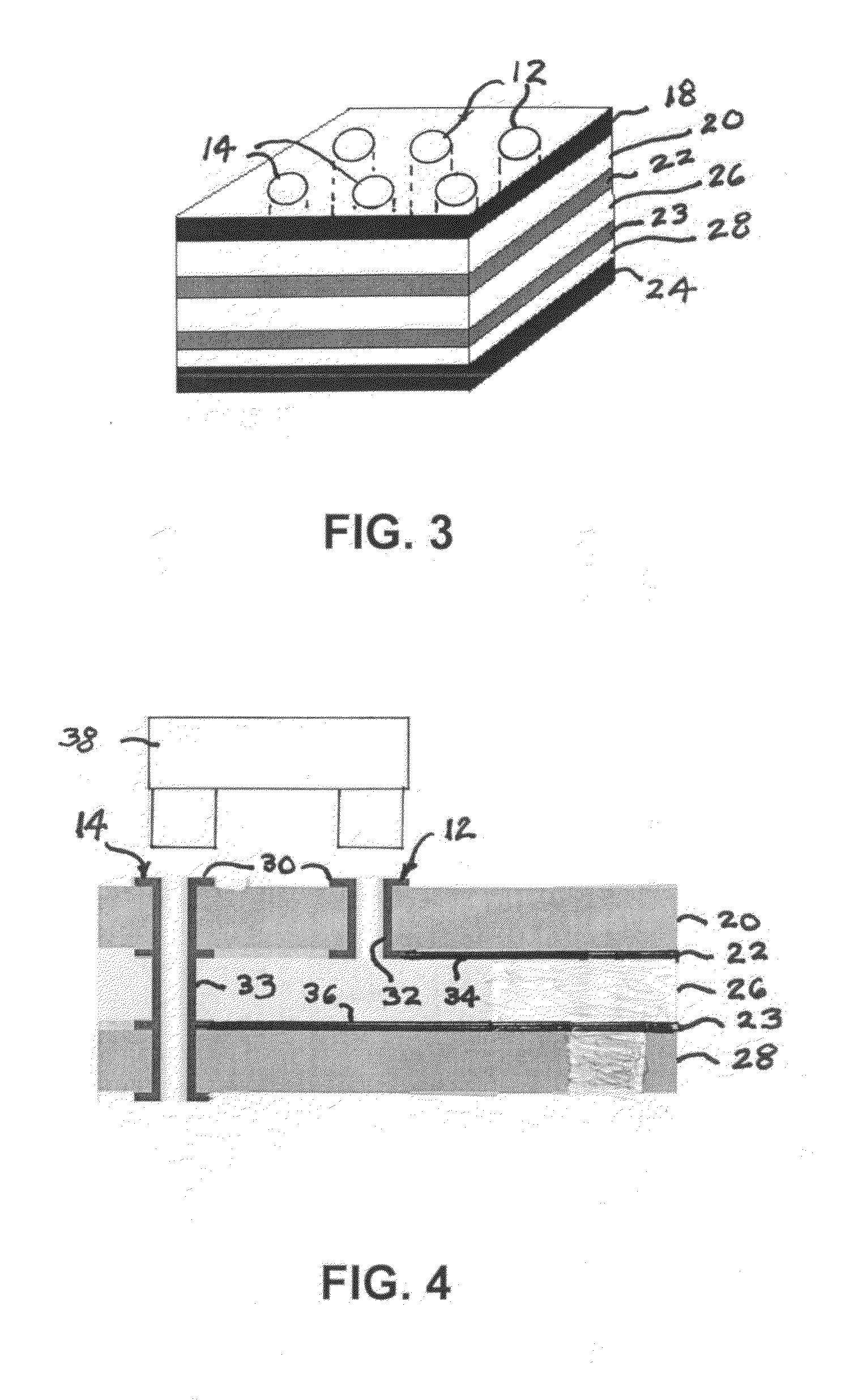Printed circuit board and method for avoiding electromagnetic interference
a printed circuit board and electromagnetic interference technology, applied in cross-talk/noise/interference reduction, printed circuit aspects, instruments, etc., can solve problems such as electromagnetic interference, disruption of operation of electronic devices, electromagnetic interference, etc., to improve the quality of the electromagnetic interference, reduce the disruption of operation, and reduce the effect of electromagnetic interferen
- Summary
- Abstract
- Description
- Claims
- Application Information
AI Technical Summary
Benefits of technology
Problems solved by technology
Method used
Image
Examples
Embodiment Construction
[0010]As can be seen from FIG. 1, known printed circuit boards have traces, such as a signal trace 2 and a ground trace 4, forming an outer conductive layer on an outward facing surface of an outer nonconductive layer. Such positioning of the signal traces presents electromagnetic interference issues. Typically, a matrix of such traces is provided.
[0011]As can be seen from FIG. 2, printed circuit boards according to the present invention, rather than having signal traces on an outward facing surface of an outer nonconductive layer, have the ends of vertical interconnect accesses (vias), such as a signal via 12 and a ground via 14, on an outward facing surface of an outer nonconductive layer.
[0012]FIG. 3 shows a portion of a printed circuit board 16 having the ends of vias 12 and 14 comprising an outer conductive layer 18 positioned on an outward facing surface of an outer nonconductive layer 20. The printed circuit board 16 also includes inner conductive layers 22 and 23 and an oute...
PUM
 Login to View More
Login to View More Abstract
Description
Claims
Application Information
 Login to View More
Login to View More - R&D
- Intellectual Property
- Life Sciences
- Materials
- Tech Scout
- Unparalleled Data Quality
- Higher Quality Content
- 60% Fewer Hallucinations
Browse by: Latest US Patents, China's latest patents, Technical Efficacy Thesaurus, Application Domain, Technology Topic, Popular Technical Reports.
© 2025 PatSnap. All rights reserved.Legal|Privacy policy|Modern Slavery Act Transparency Statement|Sitemap|About US| Contact US: help@patsnap.com



